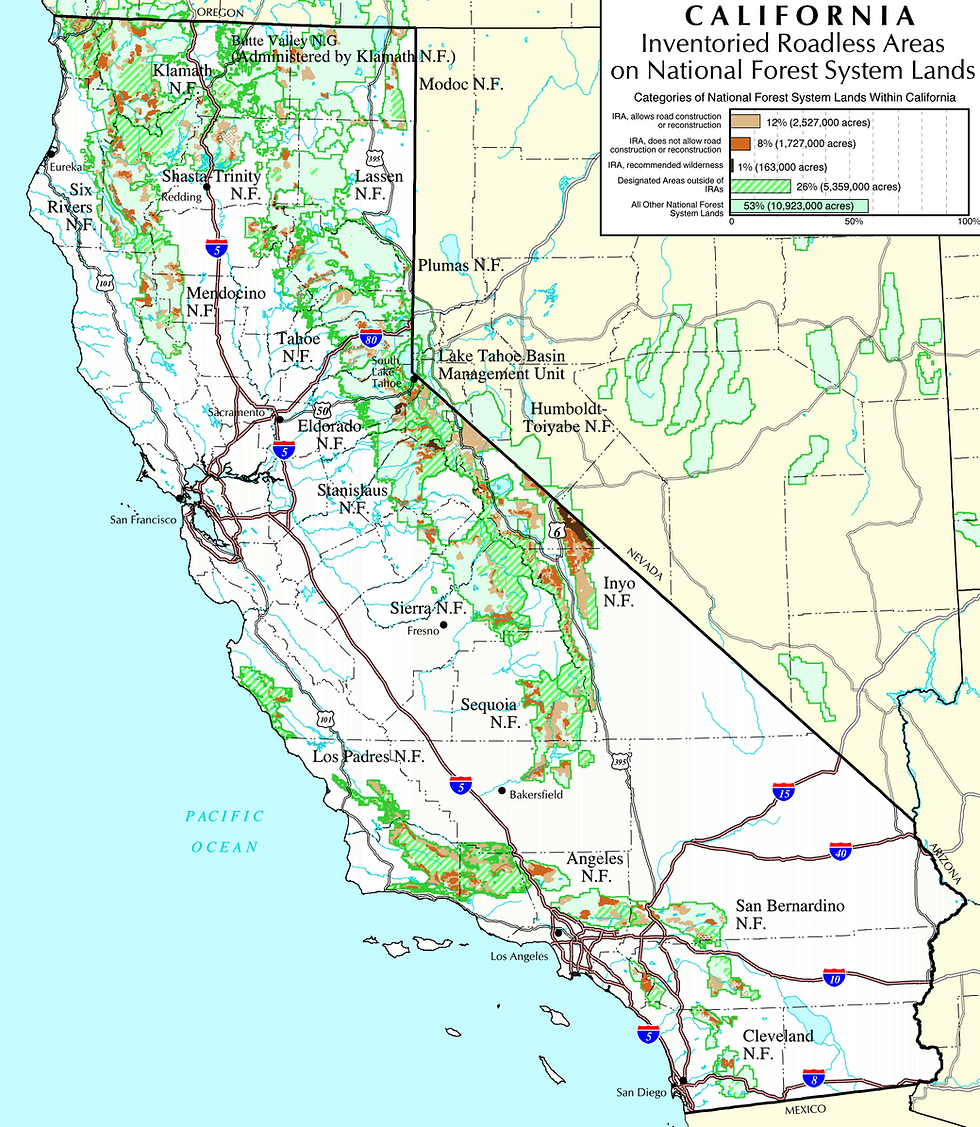Help Stop Logging on the Wild and Scenic Salmon River
- May 18, 2011
- 3 min read
The Salmon River Ranger District on the Klamath National Forest (KNF) is proposing to log 70 acres in old growth habitat on the Wild and Scenic Salmon River. The Little Cronan Gulch Timber Sale is three miles outside the town of Sawyers Bar adjacent to the Little North Fork of Salmon River, which is an important wildlife corridor between the Marble mountain and Trinity Alps Wilderness areas.
Wild and Scenic River Corridor
The North Fork of the Salmon River is designated as a National Wild and Scenic River system based on its anadromous fisheries values. The North Fork and its tributaries provide 40 miles of habitat for spring and fall run Chinook salmon, winter and summer steelhead, winter Coho salmon and Pacific lamprey as well as many other native fish. These watersheds are critical for the survival of Salmon.
Turning Trails into Logging Roads in Riparian Reserves (Streamsides)

The KNF is proposing to turn a popular trailhead into a logging road for approximately 2/3 of a mile. This trail is directly adjacent and within a perennial streamside that leads to the Salmon River. The Garden Gulch trail leads to Mud Lake and the Marble Mountain Wilderness. Logging is intended to be all ground based, meaning possibly with bulldozers along with new landings and multiple skid roads.
Wildlife Habitat and Connectivity
The Cronan Gulch watershed was designated as Northern Spotted Owl (NSO) Critical Habitat in 1992. The same area was proposed for helicopter logging in the 1990’s as part of the Knob Timber Sale, which was litigated and the federal judge eliminated these timber sale “units” because they were in Critical Habitat. The Bush Administration attempted to eradicate thousands of acres of Critical Habitat and this watershed was one of them. EPIC challenged this plan in court and even though the Fish and Wildlife Service remanded the ill conceived plan and is currently writing NSO Recovery Plan the Salmon River Ranger district is moving as quickly as possible to log the area before Critical Habitat is reinstated.
The Forest Service (FS) itself has already determined that this watershed is an important wildlife corridor. Some of the project area is within Late-Successional Reserves (LSR), which is supposed to protect and enhance conditions of old-growth forest ecosystems, which serve as habitat for old-growth related species. The FS has not surveyed to see if Threatened, Endangered, Sensitive and rare species such as the Pacific fisher exist in the project area.
The following are a few excerpts from FS planning documents:
“It is desirable to minimize the negative effects of roading within the LSRs, including a reduction in the amount of road related sediment within the watershed.”
Late Successional Reserve Assessment (LSRA).
“Reducing road densities on unstable lands within LSRs is likely to provide the greatest benefit to aquatic resources and is the highest priority.” -LSRA 1-22
“It is important to understand that some risk associated with fire and insects is acceptable because they are natural forces influencing late successional forest development.” – Land Resource Management Plan 4-105
“Project areas should be surveyed for the presence of Sensitive species before project implementation.” – LRMP at 4-23
The KNF must “seek to conserve E&T species and shall utilize its authorities in furtherance of the Endangered Species Act.” – FSM 2670.11
“This watershed has habitat critical to wildlife and fish species that are listed or petitioned for listing through the Endangered Species Act. Some of these habitat features may be at risk and need protection or enhancement. Older, late successional forest stands and anadromous fish habitat are considered some of the most important features within the watershed.” – North Fork Salmon River Watershed Analysis 1-1
Lack of Environmental Review
The most astounding factor of this project is that the District is planning to rush this project through authorities called a Categorical Exclusion (CE) with no Environmental Analysis or opportunity to appeal. However, there are extraordinary circumstances that will not allow the FS to do this legally. Please help us bring these extraordinary circumstances to there attention and tell them they should follow their own recommendations and guidelines.
The combination of Wild and Scenic River designation, Late Successional Reserves, Tier 1 Key watershed, which is critical salmon habitat, presence of Threatened salmonids and habitat for the Threatened Northern Spotted Owl signifies extraordinary circumstances that should be analyzed by a full Environmental Analysis.





Comments